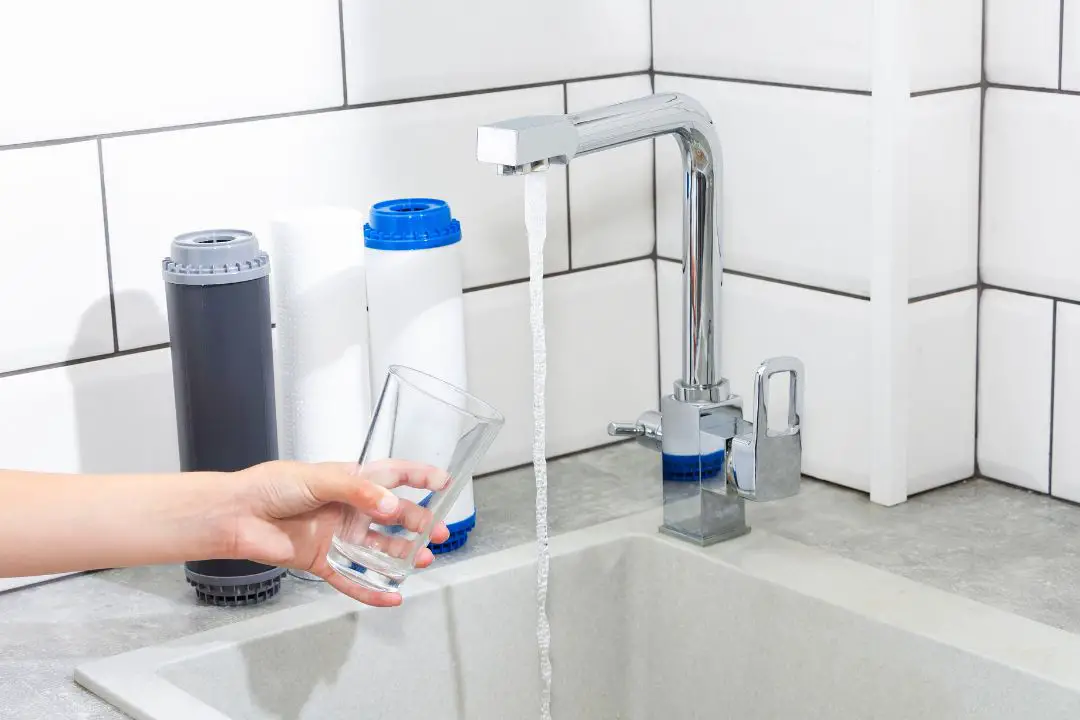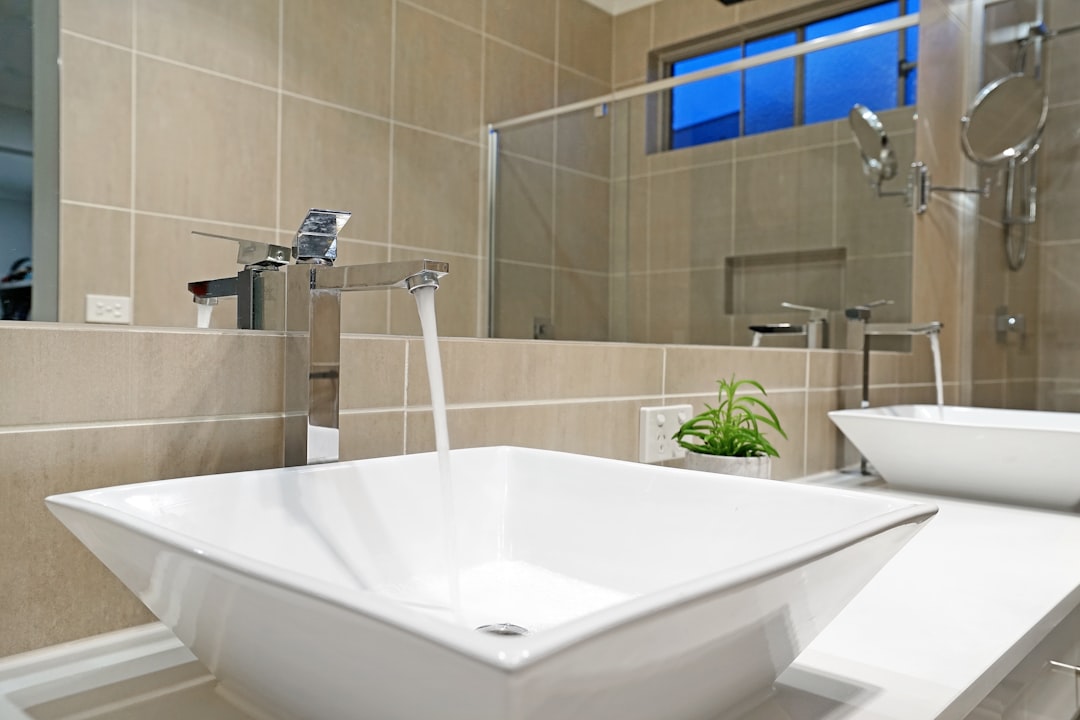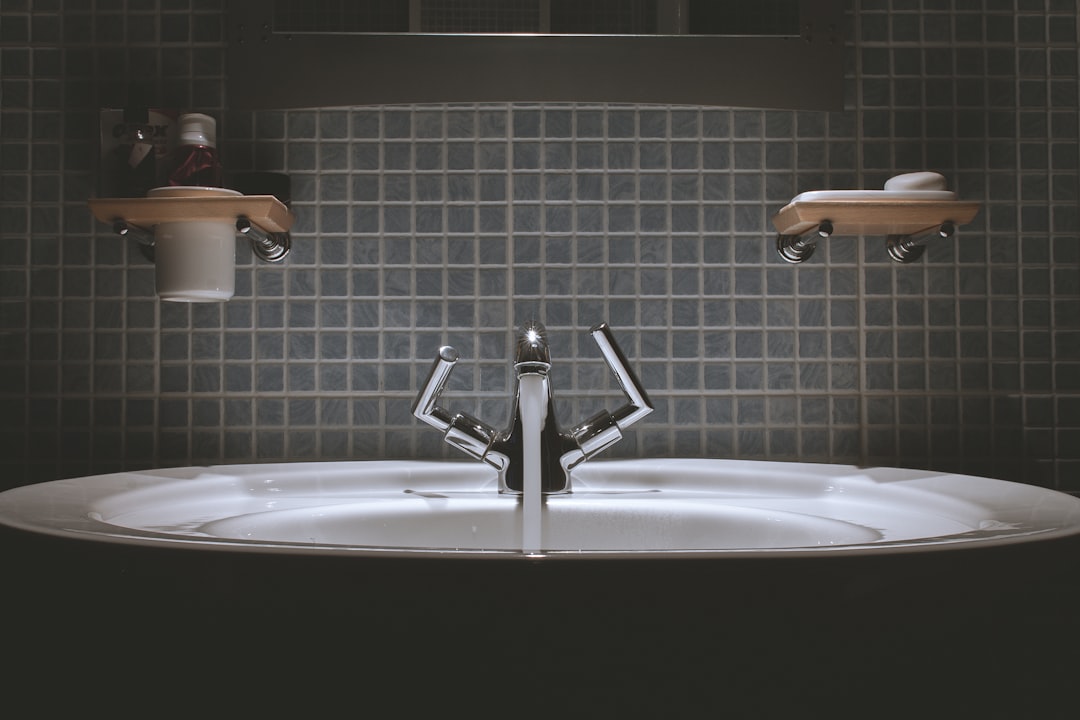Have you ever wondered if Is Bathroom Water The Same As Kitchen Water? It’s one of those questions that many people have, but few actually take the time to investigate.
Well today, we’re diving deep into this topic and providing you with all the information you need to know.
After all, water is a precious resource that we rely on for our daily lives. Whether it’s brushing our teeth or cooking dinner, we want to be sure that what we’re using is clean and safe.
So let’s explore together whether there are any differences between bathroom and kitchen water – prepare to be surprised!
Yes, the water that comes out of the taps in your bathroom and kitchen typically comes from the same source and goes through the same treatment process before it reaches your home but there may be slight differences in taste, smell, or quality based on the plumbing and filtration systems in your home.
What Is the Difference Between Bathroom and Kitchen Water?
When it comes to the water in our homes, many people might assume that all the water is the same throughout.
However, there are some notable differences between bathroom and kitchen water that could impact your health and overall experience with using them.
| Bathroom Water | Kitchen Water | |
|---|---|---|
| Source | Same as kitchen | Same as bathroom |
| Quality | May have different taste, odor, or quality due to plumbing materials and fixtures | May have different taste, odor, or quality due to plumbing materials and fixtures |
| Benefits | Convenient for hand washing, teeth brushing, and bathing | Convenient for cooking, drinking, and cleaning dishes |
| Negatives | May contain germs from toilet flushing or other bathroom activities | May contain contaminants from cooking or food preparation |
| Filtration needs | May not require additional filtration for basic use | May benefit from additional filtration for drinking or cooking purposes |
Source Of Water:
Firstly, one of the main differences between bathroom and kitchen water is their source.
While both types of water come from the same supply system that services your house or apartment building, they may have different storage conditions before reaching your faucet.
For example, kitchen water might be more likely to come straight from the mains without passing through any tanks or goods along the way.
On the other hand, bathroom water might be stored in a tank on the roof or go through pipes where contaminants can accumulate.
Taste and Odor:
Another difference between bathroom and kitchen water is related to taste and odor.
If you’ve ever noticed that your tap has an unpleasant smell or flavor when you brush your teeth or wash your hands in the bathroom sink but not when you drink from a glass of kitchen tap water, this could be due to differing chlorine levels used during treatment at different stages of delivery.
It’s important to note that while these differences exist between bathroom and kitchen water, it doesn’t necessarily mean one is better than another. Factors like plumbing conditions within a home could also impact how clean or contaminated either type of tap might be at any given time.
How Is Bathroom Water Different From Kitchen Water?
Water is a vital resource that we use for various purposes every day, from drinking to cleaning.
However, it’s common knowledge that the water in different parts of our homes might not be the same. This holds true for bathroom water and kitchen water as well.
There are a few key differences between bathroom and kitchen water, which can affect their taste, quality, and safety for consumption. Understanding these differences can help you make informed decisions about using them.
Water Pressure and Flow:
One of the main differences between bathroom and kitchen water is the pressure and flow rate.
In most cases, bathroom faucets have lower pressure than kitchen faucets because they don’t need as much force to wash hands or face or brush teeth properly.
This difference in pressure may lead to other variations like less efficient handling of soap by reducing its ability to lather up while having contact with taps–a problem that doesn’t exist when washing dishes or clothes.
Contamination:
Another significant difference lies in contamination levels due to exposure sources unique to each space.
The primary sources include toilets (flushing), and cleaning supplies stored near faucets/sinks/showers/tubs whose chemicals seep into pipes over time leading them to rust out faster.
Natural gas leaks from appliances like heaters or stoves present within close proximity causing pipe erosion and potentially leaking dangerous gases.
Sewage backups could result if there are clogs along with poor maintenance practices leading up to both bacterial growths such as mold spores growing on damp surfaces around bathrooms.
Additionally, people often misuse bathroom sinks by throwing out harmful products down drains such as toothpaste tubes, etc.
These are harmful contaminants found in plumbing systems eventually resulting in conditions where bacteria thrive without proper clean-up efforts being made routinely enough.
Something usually not seen with kitchen sink pipes because food debris will only decay under certain conditions after being exposed long enough.
Taste And Odor:
The third distinction is based on personal preference rather than any actual difference in water quality.
Bathroom water is often considered to have a different taste and odor than kitchen water, mainly because the pipes that supply it may be made of different materials such as PVC or copper; this affects its flavor profile and smell, making it less desirable for drinking.
However, this doesn’t mean that bathroom water is unsafe to drink if you treat it properly through filtration systems like chlorine filters(which remove impurities & contaminants) then there might not be any noticeable differences between your bathroom and kitchen tap water sources in terms of taste.
Generally, kitchen water is expected to have a better taste than bathroom water since it is often used for cooking and making beverages. Some people might find that their bathroom tap water tastes metallic or has an unpleasant odor due to the conditions found in pipes or storage tanks.
What Causes Contamination of Bathroom Water?
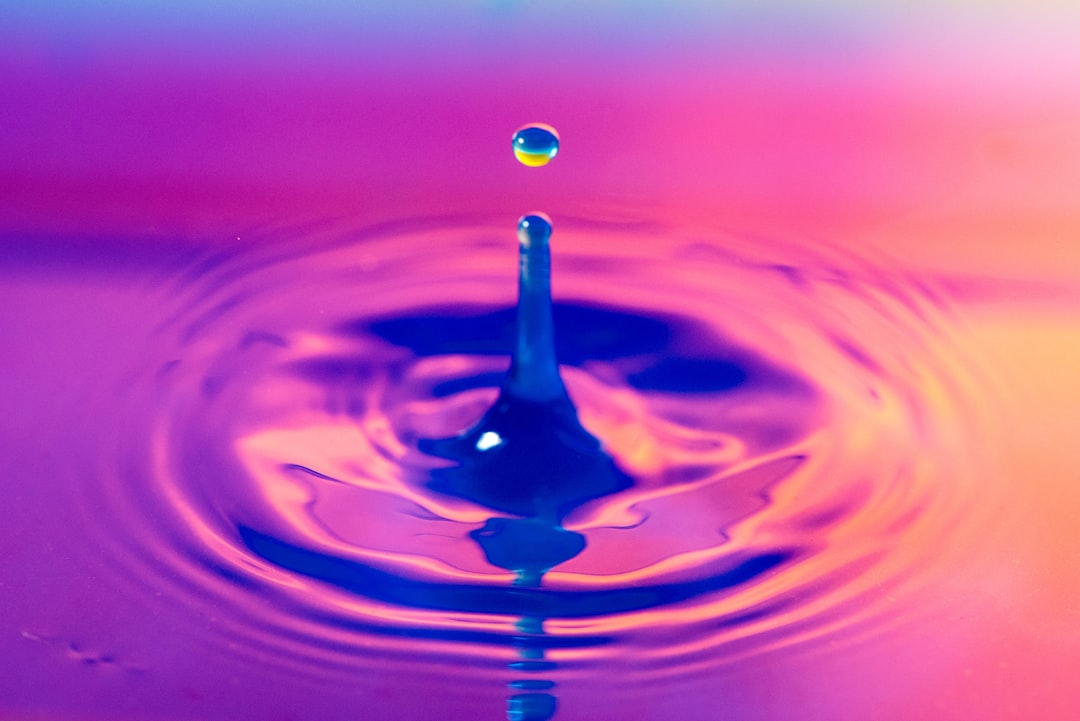
Plumbing leaks, sewage backup, and poor maintenance are some of the common causes of bathroom water contamination.
Your home’s plumbing system plays a significant role in carrying clean water into your house and getting rid of wastewater.
However, if there are any issues with the pipes or tanks, contaminants could find their way into your bathroom water.
- Plumbing leaks occur due to damaged pipes that allow dirt, debris, and bacteria to enter the water supply.
- Sewage backups can also cause contamination by allowing wastewater to seep into clean water sources.
- Poor maintenance practices like infrequent cleaning or lack of proper storage conditions might lead to harmful bacteria growth in tanks.
It is important to regularly check for leaks and repair them promptly as well as have professional plumbers regularly inspect your plumbing system and carry out necessary repairs.
Proper cleaning practices should also be observed while storing or maintaining the tanks used for storing water supply.
By being mindful of these potential sources of contamination, you can help ensure that your bathroom water remains safe for use.
1. Plumbing Leaks:
One of the main causes of contamination in bathroom water is due to plumbing leaks. Over time, pipes can become old or damaged, leading to cracks or holes that allow bacteria and other harmful contaminants into the water system.
It’s important to note that these leaks may not always be visible and might go undetected for weeks or even months. This means that your bathroom water could be contaminated without you even realizing it.
In order to prevent plumbing leaks from contaminating your bathroom water, it’s recommended to have your pipes inspected regularly by a professional plumber.
Additionally, make sure to address any leaks as soon as you notice them, and don’t let them go untreated.
If you suspect that there might be a leak in your plumbing system or if you’ve noticed a change in the taste or odor of your bathroom water, it’s best to contact a professional plumber immediately.
They will be able to assess the situation and recommend any necessary repairs or maintenance needed for your particular plumbing system.
2. Sewage Backup:
Sewage backup is one of the main reasons for contamination of bathroom water. This occurs when there is a blockage or damage in the plumbing system that causes sewage to flow back into your pipes and mix with your tap water.
Not only can this lead to foul-smelling and discolored water, but it also poses a serious health risk as sewage contains harmful bacteria and other contaminants.
Ingesting these pollutants can cause diarrhea, vomiting, and other illnesses.
If you suspect sewage backup in your bathroom, it’s important to address the issue immediately.
Regular maintenance of your plumbing system can help prevent sewage backups from occurring in the first place.
It’s also important to dispose of toilet paper properly and avoid flushing any other materials down the toilet that could potentially clog pipes or contribute to backups.
3. Poor Maintenance:
Poor maintenance of plumbing systems can lead to contamination of bathroom water.
When pipes are not regularly checked or cleaned, contaminants like bacteria and other harmful substances could build up on the walls of the pipes and mix with the water running through them.
This can affect both the quality and health conditions of water in your house.
Another factor that contributes to poor maintenance is the storage tanks used for storing water before it is supplied to homes.
If these tanks are not properly maintained, they could become contaminated with pollutants or bacteria, which eventually make their way into your bathroom faucets.
It’s important to note that poor maintenance not only affects bathroom water but also kitchen water. Therefore, it’s crucial to have a regular check-up on your plumbing system and storage tanks by a professional plumber.
To ensure that you have clean bathroom water without any contaminants, some good practices include cleaning your toilet tank regularly.
Since bacteria may grow there, flush unused pipes often (especially if you’re away from home for an extended period), and install a filter under your faucet to remove chlorine taste or odors caused by old plumbing systems.
What Are The Risks Of Drinking Bathroom Water?
When it comes to drinking water, most people assume that kitchen water is the safest and cleanest option. However, what about bathroom water? Can you drink it without putting your health at risk? Let’s explore the risks of drinking bathroom water.
Firstly, it’s important to note that bathroom water comes from the same source as kitchen water – the main supply line that runs into your house.
However, there are a few key differences in terms of how it is treated and distributed throughout your home.
One of the main concerns with drinking bathroom water is contamination.
Since this type of water typically goes through different pipes and storage tanks than kitchen water, it could be more likely to contain harmful bacteria or other contaminants.
For example, if there are leaks or issues with your plumbing system, bacteria could find their way into the pipes leading up to your faucet.
Another potential issue is taste and odor. Bathroom faucets might not have a filter or chlorine treatment system like kitchen faucets do, so you might notice a difference in taste between the two types of tap water.
While many people might assume that drinking bathroom tap water isn’t safe without boiling or filtering first, in reality, it depends on several factors such as whether any conditions exist that could contaminate these goods which include toilets or specific cleaners like bleach being used nearby, etc.
To ensure you’re not putting yourself at risk by drinking unfiltered bathroom tap water regularly, it’s best advised always stick to filtered/drinking quality named service company products for consumption purposes only
How Can You Tell If Your Bathroom Water Is Safe To Drink?
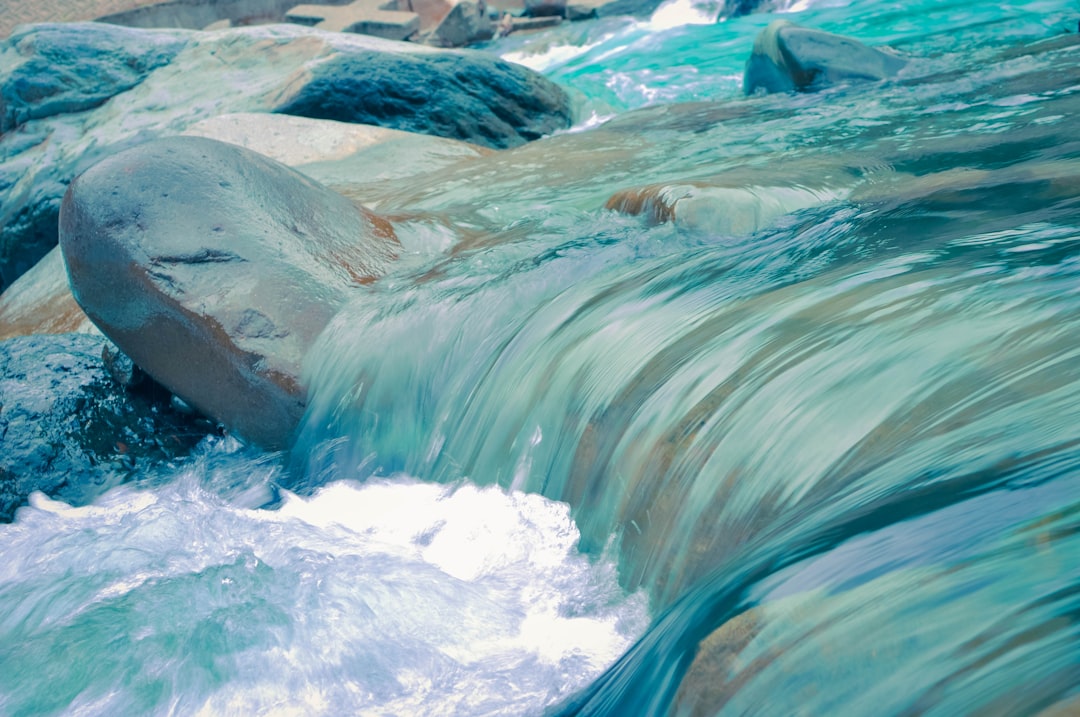
Determining the safety of your bathroom water for drinking purposes is a critical concern for many people.
It is important to note that while bathroom water and kitchen water come from the same source, there are several factors that can affect their quality and safety for consumption.
The first step in determining if your bathroom water is safe to drink is to understand where it comes from.
In most homes, both kitchen and bathroom water come from the same mains supply system. However, pipes, storage tanks, and other conditions along the way could cause differences in how clean or contaminated they are.
One way to ensure that your bathroom tap water meets minimum safety standards is by contacting your local service company which can provide information on whether contaminants like bacteria or chlorine may be found in your area’s tap water supply.
Another option would be investing in a home water filtration system designed explicitly for bathrooms.
These filters are installed directly onto the faucet and work to remove harmful contaminants while improving taste.
If you’re unsure about whether your particular house piping system has affected the quality of the tap water provided, another good rule of thumb would be to examine its color or odor.
If it appears cloudy or smells off-putting when compared with other sources of drinking fluids around you such as goods coming out of kitchen sinks without any problems – then you might want to think twice before consuming it without further investigation as these might indicate contamination issues.
Is bathroom water better than kitchen water?

When it comes to comparing bathroom water and kitchen water, many people wonder if one is better than the other.
However, in terms of quality, there isn’t a significant difference between the two. Both types of water come from the same source and go through a similar treatment process before entering your home.
That being said, there are some differences in terms of taste and odor that may make people prefer one over the other.
For example, bathroom water might have a slight metallic taste due to aging pipes or storage tanks.
On the other hand, kitchen water could have a chlorine taste due to added disinfectants used by your local water company.
While there might be slight differences in taste between bathroom and kitchen water due to various factors such as plumbing conditions or different levels of chlorine use in tap supply systems.
Both types are usually safe for consumption when treated properly for residential use.
Is bathroom water safe to cook with?
When it comes to cooking, many people wonder if the water from their bathroom faucet is safe to use.
The answer is not so straightforward as it depends on the quality of your home’s plumbing system and the source of your water.
In most cases, using bathroom tap water for cooking purposes should be safe as long as it comes from a public service company that meets health standards and regulations.
However, if you have any doubts about the quality or safety of your bathroom water supply, it is always best to err on the side of caution and boil it before use.
It’s worth noting that some contaminants found in bathroom pipes could affect the taste and odor of your food, but they are usually harmless in small quantities.
However, certain harmful bacteria or other contaminants might be present in bathrooms due to poor maintenance or contaminated storage tanks. In such conditions, using unfiltered bathroom water for cooking can pose health risks.
To ensure that you’re using clean and healthy kitchen-grade water for cooking purposes, consider installing a filter either at the point where kitchen pipes join with main lines or under-sink filtration systems.
These filters help remove chlorine along with other impurities that may have found their way into your home’s plumbing system.
Can you drink bathroom tap water if boiled?
Boiling water is a common method used to purify and make it safe for consumption.
So, if you’re wondering whether you can drink bathroom tap water if boiled, the answer is yes! Boiling bathroom tap water kills most of the bacteria and other harmful contaminants that may be present.
However, it’s important to note that the taste and odor of your bathroom tap water might not be desirable even after boiling due to its source or plumbing conditions.
The quality of your home’s plumbing system could affect both the taste and safety of your drinking water. For instance, pipes made from lead or copper may contaminate your tap water with those metals.
Moreover, depending on where you live, there might be chlorine in the bathroom supply which could affect its smell differently than kitchen supplies do (but this shouldn’t pose any harm).

